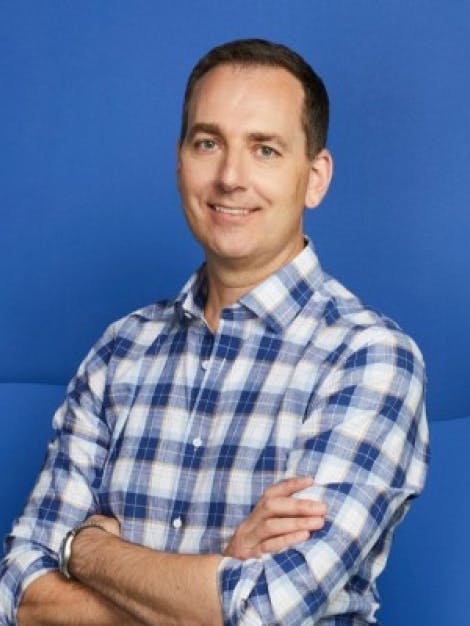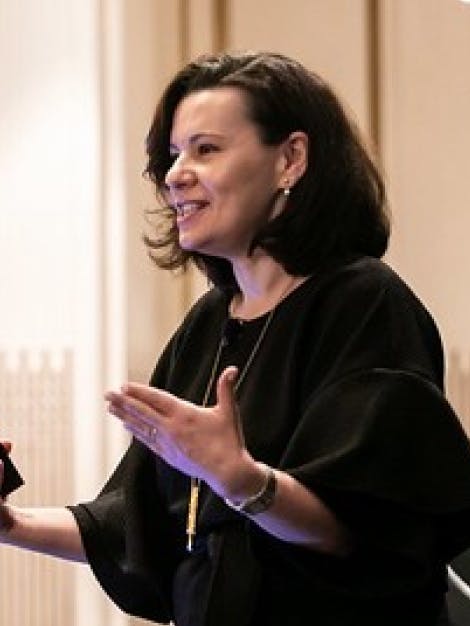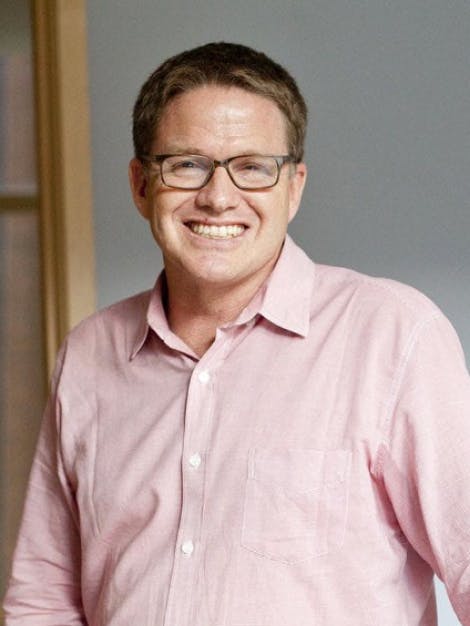Season 5 - Episode 6
Starting Products from Scratch
Christopher O’Donnell is the Chief Product Officer at HubSpot, building the best product team in SaaS, day by day and brick by brick. In this podcast, Christopher talks us through his product journey, learning process, Hubspot culture and creating products from scratch.

“Question [00:02:26] How did you get into Product?”
Christopher [00:02:28] I just love making things. I love making things. And I love being around really talented people. And that for my whole life, it was for a while it was woodworking for a while and still through today is music and being around great musicians and trying to write songs and make records. I just love kind of being in the room when stuff gets made.
Along the way, I got a job as a marketer in my 20s. And then had a shot to work on Product at that company, ran product for a small private company, and then got into startups. And the startup that I joined was acquired by HubSpot, and that was, geez 10 years ago, if you can believe it, nine and a half years ago about and I’ve just kind of held on, and I’ve grown up here trying to hold on to the rocket ship. I got into Product Management the way a lot of people get into it, which is sort of through the bathroom window, you’re in the building, you’re hanging out, and all of a sudden they say, geez, you want to work with the engineers and the designers. And I was lucky enough that I said yes.

“Question [00:03:40] In your own experience, how was that transition from a startup to a larger Corporation for you?”
Christopher [00:03:51] Huge. When I joined HubSpot, I was the front-end developer for the stuff I was working on. I was the designer, I was the UX researcher, I was the support expert, I was the sales trainer, all of these things. And today, we have people who sit in each of those roles, and so what is the product manager left to do? It becomes much more business-focused and stays very customer-focused, but we try to train our Product Managers to be just amazing storytellers.
I always thought, in the early years of the host on our site, any minute I’m going to leave and go do a startup, I’m not going to do this big company thing and go through IPO and all the rest of that. I ended up really loving some of the challenges of my current role, which are their product challenges. I work on the product, I still do, but they’re really organizational challenges, hiring, culture, just trying to product manage the Product of what it means to be a Product Manager at HubSpot, if that makes any sense. And it turns out I actually love it, I actually really, really liked it! My customers are my team in many ways, and I get their feedback, and I can make a couple of big decisions here and try to give them what they need so that they’re happy, and it’s worked out. It has worked out pretty well. We’ve been a pretty amazing team.
“I always say that for me, Product is more of a mindset than the actual title. You can treat everything as a product, you can treat your team as a product. And once you get into that mode of Okay, there is a problem that I’m going to need to figure out, I don’t have all the answers yet, but I have a good team, and I have a good intuition, I’m going to look at certain data points, certain quality information, and then try to make the best out of this whole situation. That’s exactly what Product is for me.”
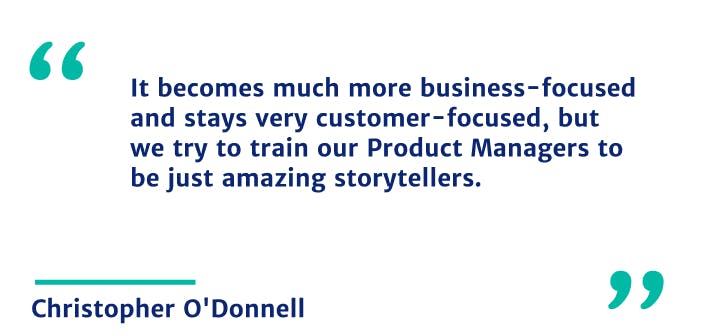
“Question [00:04:56] How do you learn the hard way to actually manage a team, redesign the org chart and do all the things that are not in a textbook?”
Christopher [00:05:10] Getting feedback but from two very specific places. A lot of people look to their boss for feedback. And that can be great. I have a great boss; I work for Brian Halligan. He’s one of the best CEOs in the world. He’s a wonderful guy. He’s a friend of mine. He gives me great feedback. He gives me really helpful reviews and stuff to work on. But I get more feedback from my team and my peers than I’ll ever get from any boss. And that’s been really, really key. As I’ve seen, folks who’ve held on to the rocket ship, and folks who’ve gone off to do other things, I think one of the big differences is, do you have a peer group where people are telling you how you’re doing. Whitney Sorenson, our head of engineering, is my best friend. And he and I talk all day, every day. And he’s hard on me; he pushes me really, really hard. And that’s the key; I get the feedback. So I think peer feedback is something you can never fail to learn from.
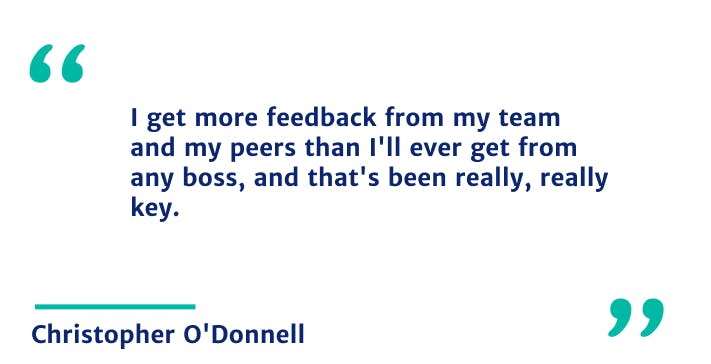
The other is, I found it very helpful to find people who are three to five years ahead of you in your career. Like a lot of people look to these big, fancy business leaders, and they want to learn from Elon Musk, and they want to learn from all this stuff, or the young product managers come, and they want to learn from Brian Halligan. There’s definitely a lot to learn from Bob Iger and Elon Musk, and Bill Gates, and all for sure. But for me, finding someone who’s just a little bit ahead of me is incredible because they’re closer to what I’m actually doing. I’ll talk to Brad Rencher, who used to have my job at Adobe for 10 years. And he’s like, a big brother, and so I can I call him up and invent, and say, Oh, my God, is this part of my job is getting really hard, right? Here’s how I’m spending my time. Is this insane? And because he’s five years, maybe a little bit more, in his case ahead of me, I can get that feedback, or I’ll call Fidji Simo at Facebook. Folks who are doing what I’m doing, and they’re still close to it, they have an org that looks like my org, but it’s a little bit bigger. And I’ll sanity check them, especially for product leadership. There’s no book. There’s no content. There’s nothing about this stuff. This is like a total black art, in terms of trying to figure out like, Oh, my God, I’m taking my design team from 50 people to 200 people, what am I going to run into? There’s no blog post about that. I mean, if there is, I hope someone will forward it. I’d love to read it.
You might be interested in: How to Handle Data and Team Scalability With Zalando Product Manager
In my experience, when I’m working with someone, and they grab the laptop away from me, and they start showing me how to do something. That’s what I want. I want someone to be like, No, no, no, no, no, no, no, let me show you how to do this. And, yeah, I find that with folks, sort of five years ahead of me, maybe I learned a lot there.
Those people often are thinking about different things and working on different things. And so the feedback is going to be like, in my experience, very high level, and not specific. I reach out to people all the time who are at doing this, but doing it at ServiceNow, or doing it at Facebook, or doing it at Amazon or something like that. Here’s the thing, reaching out to someone and just saying, hey, I’d love a coffee. Just don’t do that, but if you have a good question, and you write someone, they’re gonna write you back. If somebody is running a startup, and they have a question about scaling a design team using that as an example, and they write me an email, I’m gonna write them down and take time to write them back. And everybody’s sort of seems to be that way. But just sort of this bland networking doesn’t really get you there. Just meet for coffee to have mentorship or whatever. Someone that you can ask stupid questions to.
That’s one of the things I love about HubSpot is that you can raise your hand in a meeting and say, I don’t understand what we’re talking about, and it’s sort of a teaching hospital where the room will, sort of bring you up to speed. And a lot of times you find that you actually do understand what’s going on. And you’re actually on the same page with people. But for our Associate Product Managers, when we bring them in, we require that they have a mentor. And that mentor is someone who’s again, just maybe a few years ahead of them in their career. And that’s important, because sometimes we get self conscious, and we don’t want to go to our boss and ask how to do something that we should know how to do, or we think we should know how to do. But if you have someone that you can kind of slack on a daily basis and ask stupid questions to. That’s, that’s really what we need. We all need it, I need it.
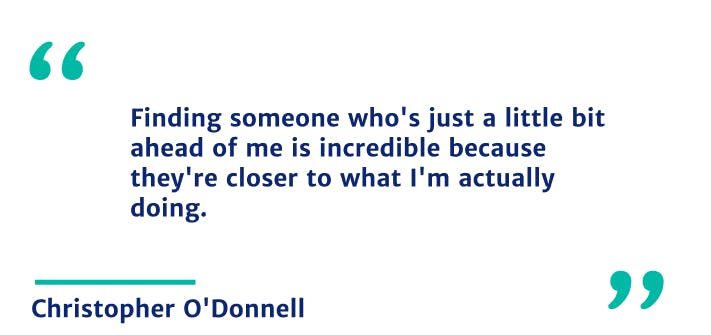
“Question [00:14:02] What’s your philosophy around hiring PMs?”
APMs are essentially entirely internal. And, we’ve learned that it’s easier to teach somebody Product Management, especially the way that we do it’s a little different. We give the teams enormous power and we deploy over 1000 times a day to production. To the frontline teams have all the power. And so coming in and learning product management and HubSpot, the business model of our customers and everything is very hard. We hire the very, very, very best people in support usually. And it’s kind of an unfair advantage for us, they come into the role they’ve done 2-3000 customer calls already. They know every inch of the product inside and out. We’re very transparent on our wiki and accompany meetings. And so they’re very exposed to the business just being at HubSpot. It doesn’t matter who you are, everybody understands SaaS, and our business model, and our customers, and so forth. So for us to teach them Product Management is hard, but it’s very doable. In the hardest challenge there is just getting them to believe in themselves, and getting them to have the confidence to take positions and make bets and believe in themselves, because you kind of get into the role and you start looking around like, I actually do have a ton of power.
About four months into the APM program, every single APM has this moment where they say, you’ve made a huge mistake, I’m not supposed to be here, I don’t have any idea what I’m doing. I’m not prepared to make these decisions. Every single one 100% of them, between three and four months, go through that period 100%. We just wrap our arms around them and say, no, you got this, you can do this and get the confidence. And almost 100% of them make it through it. On the senior side, we hire externally, my direct team is a collection of product VPs and VP of UX. And those were almost all, four out of five, I’d say our external hires.
Diversity is incredibly important to us. So internal, external, all roles, we do the Rooney Rule, and we have wide slates, we talked to all sorts of people, we are sure to talk to lots of people from underrepresented categories. And that’s, that’s very important to us. Because our customers are very diverse. We have offices around the world, we have global customers, we have people, all kinds of different businesses, all kinds of different communication styles. And so shouldn’t our product team reflect that? So that’s kind of the big hallmark, especially the last few years of our kind of hiring practices. I have a recruiter who is dedicated to product and UX. She’s incredible. If you want to work at HubSpot, look her up. Her name is Ashley Hodder. She’s a delight. She’s awesome.
And the last thing I’ll say about it is, I am very authentically interested in people’s careers in product. I have to admit, primarily people from underrepresented categories, and so I spend a lot of my free time working with people on their careers, whether they work for me or not. I spent an hour, with someone yesterday she said, I want to do a small company thing, I want to do a startup, I say, Great. Let’s meet quarterly. If you want to talk about the challenges that you have, I just really care about your career. And a lot of those people do end up joining the team. So that’s another really important thing. I try to act like a sports agent, and look out for people and I help other companies with their product hiring, right. It’s a whole kind of community thing. I never try to attract someone to a role at HubSpot when it’s not the right thing for them. I spend a lot of time on that one. I forget about taking this job at Google Cloud, what would that be like? Well, I don’t know. Let me go find out. Let’s talk about it, oh, yeah, this looks like a great gig for you.
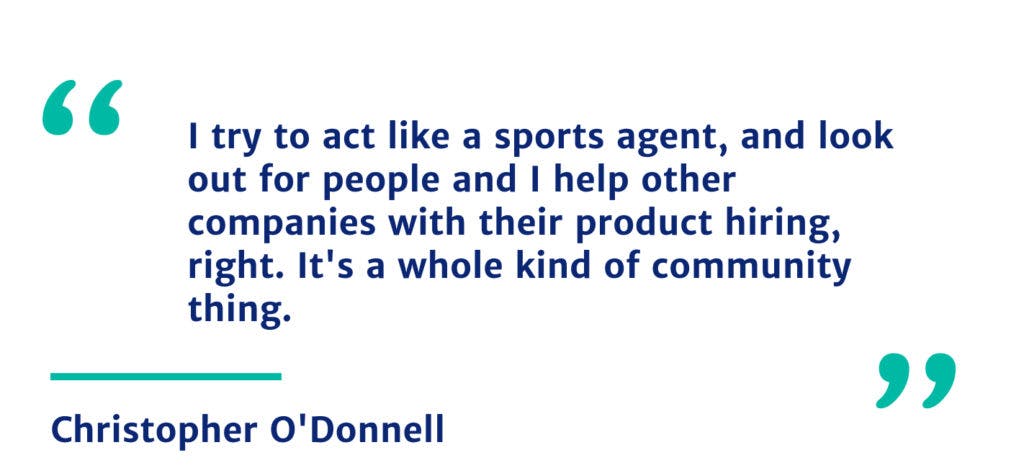
To that point, thinking about hiring from the other side of being a candidate. And I’m sure folks here are thinking about, changing jobs or getting into product for the first time, and to me, it’s all about the stories. It’s about working at companies that have a good reputation. That’s much more important than the title. Where you go to school, I think doesn’t really matter anymore. I don’t know where anybody on my team went to school. I have no idea. And I don’t care. I know where they all worked. And I know what stories they have, I know the narrative of their kind of career and what they’ve gone through and those are the things that make them very attractive in terms of candidates to join a team.
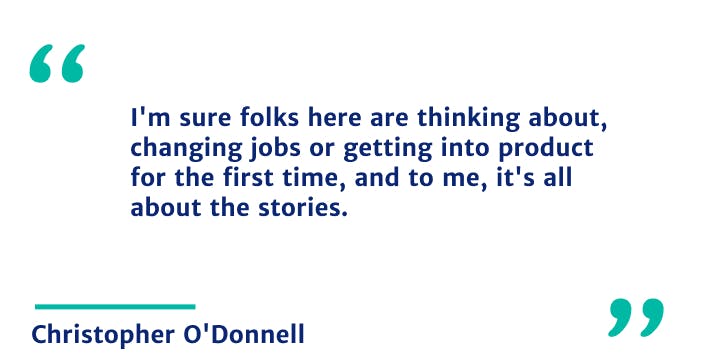
What the advice I give people is to be the sort of T-shaped person, and I’m not the first one to come up with this. But to have one discipline, where you really are bringing something very special to the table. And then to have a lot of disciplines where you’re kind of like, a B minus like I’m a B minus designer, or maybe a B on a good day, I’m not an amazing designer, but I used to be a D. And I spent a couple of years really learning about user experience, and UI design information architecture, and reading books, and talking to people and all this kind of stuff. I got to the point where like, I’m decent, I could do the job on my team. And that’s an important thing. I’m nowhere near the best designers on my team. I mean, they smoke me. But I’m a decent data analyst, I’m a decent user researcher, you kind of get decent at these things. And then you can work with, especially as your company grows, work with people who are full-time specialists in each of those things, as you say, is the sort of generalist Product Manager.
“As a CEO I’ve made that mistake in the past of thinking I’m not good at this, I’m just going to hire someone to fix those problems. No, I need to go in first, learn enough to be dangerous, and then of course, make the decision to hire someone better.”
Exactly, then, because you need to be able to call bullsh*t. And then you need to understand. And you know what, if you’re a B minus in one of those disciplines, and someone’s trying to sell you on something that isn’t smart, you’ll realize, and you’ll go wait a second, this doesn’t make any sense. That’s a very important thing in Product Management, I think, is just saying wait a sec, until someone can explain this to me, we’re not doing it. And there’s a lot of value just in that.

“Question [00:23:00] What is the status of the company on their product team?”
Christopher [00:23:09] So we’re a public company, we’re still, you know, I think of going public as getting your jersey not winning the ring. And that’s very important. A lot of East Coast companies have gone public and then just petered out, because everybody was like, we did it. And we very explicitly were like, this is our entry into the major leagues, and so we still think of ourselves a bit. It’s like an expansion team. We’re a newer team, or small-cap company, depending on the day, it’s a 16 billion-18 billion market cap, depending on the day. In R&D, we’re about 1200 people. We have probably 700 engineers, some folks that are overhead, and then on my side, front-line Product Managers, it’s over 100 now, and we have a Designer for every single Product Manager.
Today, we happen to have more Designers than we have product managers. Then we bundled them together into these small autonomous teams, you have a Product Manager, Designer, a Tech Lead, who spends half their time coaching, half their time coding. And then, maybe two or two or three Engineers, that PM and UX pair can actually lead not just one of these dev teams, but maybe three. Two is probably most common. For anybody who’s interested in inside baseball, we’re running like 7 engineers to 1 PM to 1 UX.
Of course, the other way to do it is to have some central design team, you know, that gets sort of contracted out onto different projects and shared resources. We did that, and it was awful. What happens is the principal distinction or difference is that the designers get brought in very late in the process. And when you bring a designer in late into the process, you want to get into the development cycle early, if you’re in UX because then you can be really strategic, you can help understand the problem to find the problem, and you have a huge impact on what actually gets built. Whereas if you have central resources, often what happens is the dev team and the Product Manager, just go ahead, they build something, they haven’t researched it particularly well. And then the designer is asked to make it look pretty. And those Designers, frankly, they quit. And I don’t blame them. It’s not it’s not a fun job, whereas when the designers are much more strategic, and they’re involved in research, it’s really fun. And they have a ton of impact.
Check out: Here’s How to Make Your Designers Love You
I think UX, in general, as an industry needs to become more strategic, I think they need to become closer to the business. I would love to see more UX founders of big successful companies, we don’t see a lot. You know, I mean, Steve Jobs wasn’t a design person, even we have Brian Chesky, I guess at Airbnb. but you don’t see a lot of people with design backgrounds, founding companies, and being business leaders. And I really think that that needs to change. Because the more we bring UX into the business, for example, we’re going to do a deep user research project on a pricing and packaging question, you know, are we’re going to do a big design project on the pricing page. It’s unbelievable, and the business people, there are the people who are sort of on the go to market side, they see this research, and they see the design thinking that goes into it. And they’re like, Oh, my God, you got to see the stack, and the decks get flown around. And the UX researchers get brought into the executive team. It’s unbelievable, so I really want to see more of that.

“Question [00: 28:14] With such big teams at HubSpot, how does your calendar generally look like?”
Christopher [00:23:09] It’s very different day-to-day. I spend a lot of time with my team. I spend a good amount of time with, my counterparts, like Yamini, who runs all of our customer, pillar of the company, she runs all sales services, marketing. So I stay very close to her. She’s unbelievable. I’m learning so much from her. She was at Workday, and then Dropbox and now at HubSpot, she’s amazing. And we have to stay very aligned. Because if we’re not aligned, then our teams are going to get out of alignment. And then work is going to be no fun, right? We’re going to be in meetings where people are pointing fingers and all this kind of stuff. So she and I stay really close.
I stay really close with my direct team. I spend, probably an hour a day diving into one part of the product or another. I can’t be involved deeply in all parts of the product at every time, but I’m usually involved in two or three, where I’m in the Slack channel. I’m like part of the team kind of more like Zuckerberg-y, I guess. Although I’m probably a lot quieter than he is. We don’t do these big, Product Review type things. We let the teams go, it’s not a Marissa Meyer thing where they come in and present to us and we pick it apart before they go out to production. It’s not at all they come to us and they say here’s what we did. And here’s how it went, and here’s what we’re going to do next. Which again, makes it really fun. makes it really fun. And people work harder, they own their mistakes, we tolerate their mistakes, and it just ends up being way better for customers.
I also spend time talking to customers. Our customers are our friends too. I mean I text with them, I know their families, we go to their weddings. We’re very close with our customers because these people are literally feeding their families using our software. And that’s a humbling privilege for us to have. I spend a bunch of time with my boss. I spent a bunch of time in, business readout meetings, QBRs, that type of thing. It’s a good amount of time, probably a couple of days a week worth of just kind of operating system, big meetings. Not my favorite thing in the world to do but it’s important. And I have to kind of be a senator and bring a perspective from our team and represent our team in a gracious way. And recruiting.
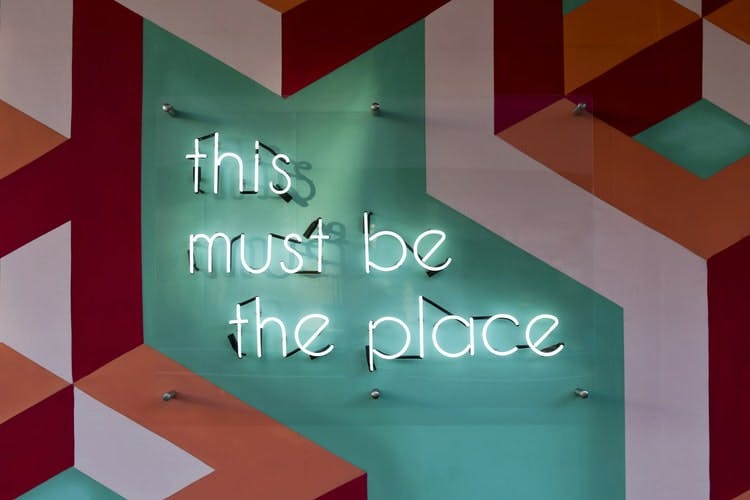
I love to get back to the community, but I’m also here to recruit. I’m trying to like hey, look hubspot.com/jobs We’re hiring! We hired 100 people on my team last year, and we’re much more open to remote work these days. We really want to cast a wide net to find the best people in the world. So yeah, that’s at least greater than 0% of why I’m on the phone, although it’s also just great to chat.
We’ll be back again next week with Anique Drumright from Loom for even more of the latest insights from the Product Management world. Stay tuned for more!
Listen to our episodes on your favorite platform
Stay tuned for new episodes
By sharing your email, you agree to our Privacy Policy and Terms of Service

